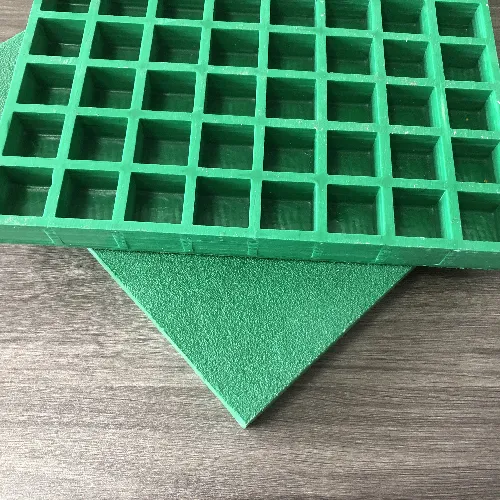loading...
- No. 9, Xingyuan South Street, Dongwaihuan Road, Zaoqiang County, Hengshui, Hebei, China
- admin@zjcomposites.com
- +86 15097380338
- Welcome to visit our website!
open floor grating
Understanding Open Floor Grating A Comprehensive Overview
Open floor grating, an essential component in modern architecture and industrial design, has gained widespread recognition for its unique functional and aesthetic properties. This article aims to provide a comprehensive understanding of open floor grating, its applications, advantages, and considerations when choosing the right type for specific purposes.
What is Open Floor Grating?
Open floor grating refers to a flooring system made from a grid-like structure, allowing for open spaces between the individual grating components. These components are typically manufactured from materials such as steel, aluminum, or fiberglass, providing a resilient and durable surface. The design facilitates optimal drainage, ventilation, and light penetration, making it suitable for various environments, from industrial applications to commercial and residential settings.
Applications of Open Floor Grating
1. Industrial Facilities One of the most common uses of open floor grating is in industrial environments, such as factories and warehouses. The grating allows for the efficient passage of light and air while providing a sturdy walking surface. It can also help in preventing the accumulation of debris and fluids, thereby enhancing workplace safety.
2. Walkways and Platforms Open floor grating is also employed in the construction of walkways, platforms, and catwalks. These structures are often found in settings like theme parks, sports arenas, and amusement parks, where visitor safety and aesthetics are paramount. The open design reduces the risk of slipping and offers a modern appearance.
3. Commercial and Retail Spaces In commercial settings, such as shopping malls and office buildings, open floor grating can be utilized in floor designs to create visually appealing spaces. It allows natural light to filter down to lower levels, contributing to energy savings and an inviting atmosphere.
4. Marine and Coastal Applications Open floor grating is particularly beneficial in marine environments. Its design permits water drainage and reduces the potential for standing water, which can lead to corrosion and structural damage. Marine docks and loading areas often utilize this type of grating for its durability against harsh weather conditions.
Advantages of Open Floor Grating
- Safety The slip-resistant surfaces of open floor grating are designed to provide traction even in wet conditions, significantly reducing the risk of accidents
.- Versatility Open floor grating can be customized to suit various applications, with multiple materials, sizes, and configurations available.
open floor grating

- Lightweight and Easy to Install Compared to traditional flooring options, open floor grating is generally lighter, making handling and installation more manageable. This reduces labor costs and installation time.
- Durability The materials used in open floor grating are resistant to corrosion, chemicals, and extreme weather conditions, ensuring long-lasting performance in demanding environments.
- Low Maintenance The open design minimizes the accumulation of debris, making maintenance simpler and less frequent than traditional flooring solutions.
Considerations When Choosing Open Floor Grating
While open floor grating offers numerous advantages, it is crucial to consider several factors before making a purchase
1. Load-Bearing Capacity Depending on the intended application, it’s essential to choose a grating type with an appropriate load-bearing capacity to ensure safety and functionality.
2. Material Selection Different materials have varying properties, such as corrosion resistance and strength. The choice of material should be influenced by the environment in which the grating will be installed.
3. Aesthetic Appeal For applications in commercial or residential settings, the design and finish of the grating can significantly impact the overall aesthetic. Consider options that align with the desired architectural style.
4. Installation Requirements Understanding the installation process and requirements is vital for a successful project. Some types of grating may require specialized installation techniques or equipment.
5. Regulatory Standards Ensure that the chosen grating complies with local building codes and safety regulations, as these standards can vary widely.
Conclusion
Open floor grating is a versatile and practical solution that addresses various needs in industrial, commercial, and recreational settings. By understanding its benefits and considerations, architects, engineers, and property owners can make informed decisions that enhance both safety and aesthetic appeal in their designs. Whether utilized in a warehouse, a shopping center, or a boardwalk, open floor grating remains a pivotal element of contemporary architecture and design.
-
The Rise of FRP Profiles: Strong, Lightweight, and Built to LastNewsJul.14,2025
-
SMC Panel Tanks: A Modern Water Storage Solution for All EnvironmentsNewsJul.14,2025
-
GRP Grating: A Modern Solution for Safe and Durable Access SystemsNewsJul.14,2025
-
Galvanized Steel Water Tanks: Durable, Reliable, and Ready for UseNewsJul.14,2025
-
FRP Mini Mesh Grating: The Safer, Smarter Flooring SolutionNewsJul.14,2025
-
Exploring FRP Vessels: Durable Solutions for Modern Fluid HandlingNewsJul.14,2025
-
GRP Structures: The Future of Lightweight, High-Performance EngineeringNewsJun.20,2025
